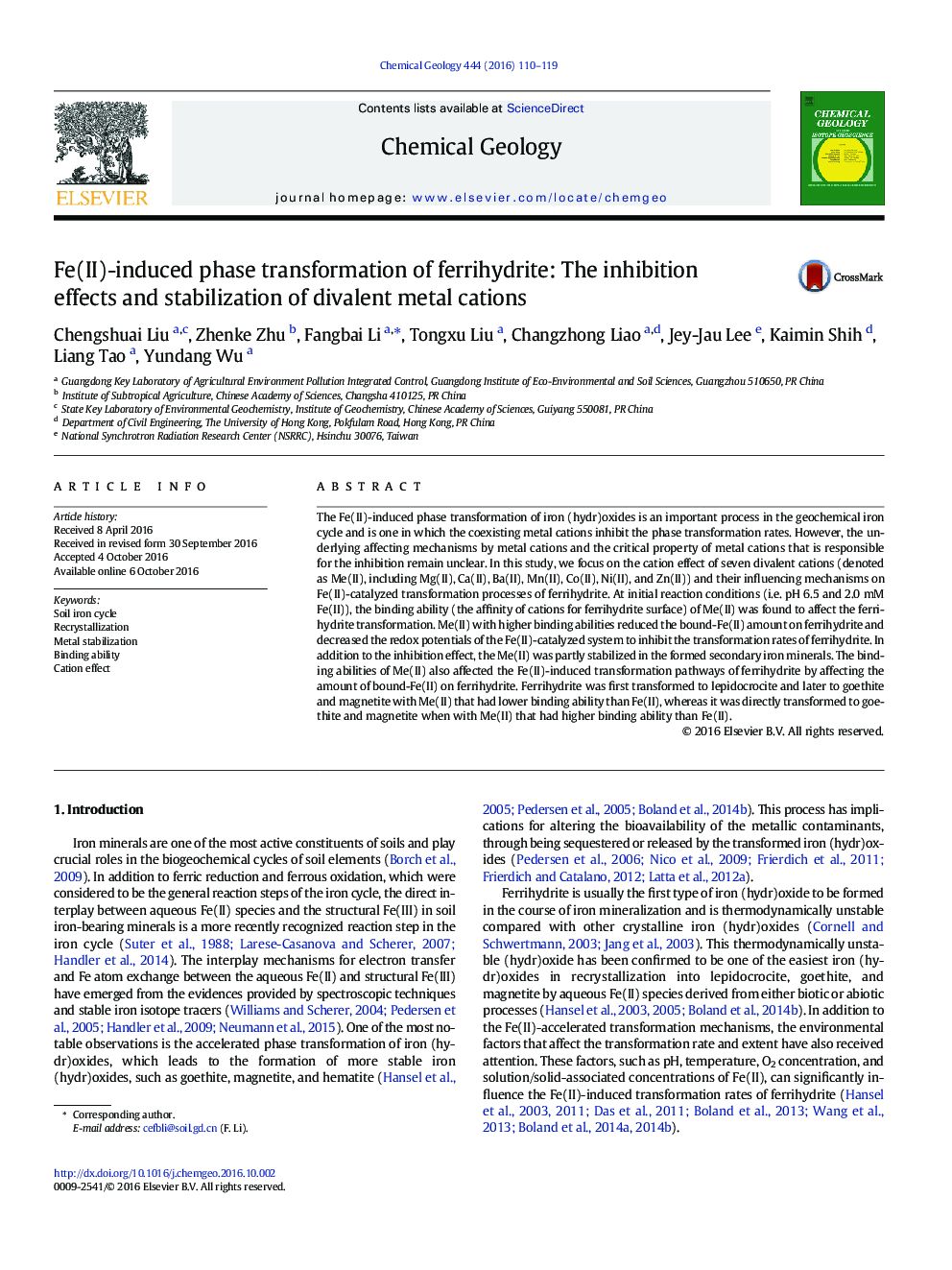| Article ID | Journal | Published Year | Pages | File Type |
|---|---|---|---|---|
| 4698174 | Chemical Geology | 2016 | 10 Pages |
•Fe(II)-induced phase transformation of ferrihydrite is inhibited by the presence of divalent metal cations in solution.•Binding abilities of cations affect the phase transformation rate of ferrihydrite at a constant pH of 6.5.•Different divalent metal cations result in different pathways of Fe(II)-induced ferrihydrite transformation.•Metals were stabilized through occlusion/incorporation in the formed secondary iron minerals from transformed ferrihydrite.
The Fe(II)-induced phase transformation of iron (hydr)oxides is an important process in the geochemical iron cycle and is one in which the coexisting metal cations inhibit the phase transformation rates. However, the underlying affecting mechanisms by metal cations and the critical property of metal cations that is responsible for the inhibition remain unclear. In this study, we focus on the cation effect of seven divalent cations (denoted as Me(II), including Mg(II), Ca(II), Ba(II), Mn(II), Co(II), Ni(II), and Zn(II)) and their influencing mechanisms on Fe(II)-catalyzed transformation processes of ferrihydrite. At initial reaction conditions (i.e. pH 6.5 and 2.0 mM Fe(II)), the binding ability (the affinity of cations for ferrihydrite surface) of Me(II) was found to affect the ferrihydrite transformation. Me(II) with higher binding abilities reduced the bound-Fe(II) amount on ferrihydrite and decreased the redox potentials of the Fe(II)-catalyzed system to inhibit the transformation rates of ferrihydrite. In addition to the inhibition effect, the Me(II) was partly stabilized in the formed secondary iron minerals. The binding abilities of Me(II) also affected the Fe(II)-induced transformation pathways of ferrihydrite by affecting the amount of bound-Fe(II) on ferrihydrite. Ferrihydrite was first transformed to lepidocrocite and later to goethite and magnetite with Me(II) that had lower binding ability than Fe(II), whereas it was directly transformed to goethite and magnetite when with Me(II) that had higher binding ability than Fe(II).
Graphical abstractFigure optionsDownload full-size imageDownload as PowerPoint slide
